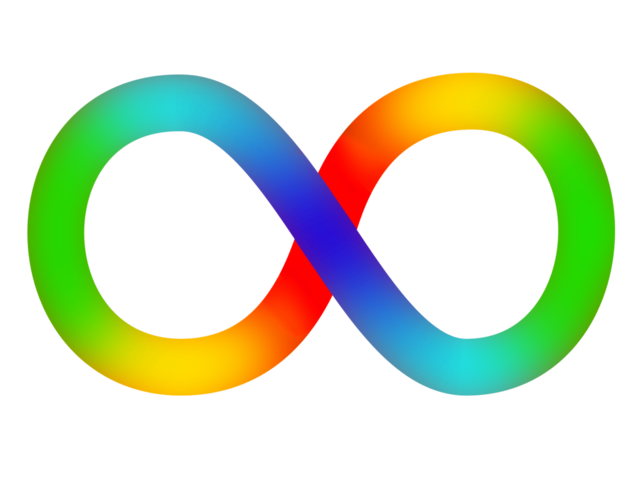Autism
What Good Is an Autism Diagnosis?
Why getting an autism diagnosis can be helpful, even if it's not “objective.”
Posted April 23, 2021 Reviewed by Ekua Hagan
Key points
- Diagnostic categories are messy and do not reflect objective reality.
- Even if categories don't really exist in nature, diagnoses like autism can still be very helpful in understanding patterns.
- Using diagnostic categories such as autism can help move us toward action and acceptance.
I’ve lamented in the past that our psychiatric diagnostic categories are so messy, so poor, as to render them essentially meaningless. In a scientific sense, I still think that’s true. They reflect no objective truth. They do not “carve nature at the joints.”
For example, there is no such thing as “autism” lurking in some individuals’ bloodstreams (and not in others’). No one “discovered” autism; they just categorized certain patterns of responding to social and emotional environments and tried to find similarities across very, very different individuals’ behavior.
No two autistic (or “neurotypical,” AKA “NT”) people are the same. There are “a thousand and one ways,” as one of my earliest clinical supervisors liked to say, that autistic symptoms can show up in a person. This is true for all psychiatric diagnostic categories, which all include multiple criteria, subcriteria, and imperfect algorithms for deciding whether someone crosses the threshold necessary for applying a label: Mathematically there are infinite permutations of social, communicative, affective, sensory, and behavioral traits.
We arbitrarily decided at some point in history that only those in the highest 1, 2, 3, or 5% of symptom frequency and severity, depending on the category, would count as crossing that diagnostic threshold. We reverse-engineered our research and rating scales and tests to create cutoff scores that reflect these a priori prevalence estimates. Then we acted surprised when suddenly autism started getting diagnosed in 1 in 59 people.
We say that somehow shows it’s “not real” or “overdiagnosed.” This is ridiculous. The numbers don’t fit our predictions because our predictions were based on theory and not actual observational data. Now that our data have been updated, we should be updating our conceptualizations—not the other way around.

But Don't Neuroimaging and Genetic Research Show "Autism?"
You can see this in neuroimaging research, in fact, which is ironically used to point to “real differences” differentiating autistic from neurotypical (“NT”) brains and, by extension, “types of people.” We look at pretty pictures of certain “autistic brains” “lighting up” in particular places, in particular ways, and we point to that as evidence of a natural category. But these pretty pictures are deceptive.
"Brain maps" show averages of hundreds, sometimes thousands of different brains, and they are selective representations of much larger brain activity patterns—not hot spots on an otherwise silent backdrop (listen to this podcast for more on this). They are the result of particular scientists’ calculation and analysis decisions, and are largely dependent on the comparison group, task, area, or network that an investigator chooses a priori (i.e., if there’s less than a 5% chance of this or that difference, an arbitrary cut point, then we’ll say it’s real). This is not to say that neuroimaging—or diagnostic categories—have nothing to offer, it’s just to point out that despite popular claims to the contrary, “seeing” a brain light up in particular ways does not confirm the true, objective existence of “autism” as distinct from “not autism” any more than a score on a questionnaire or test does.
The same is true in genetic research. True, scientists have identified patterns across generations, using datasets with again, 100s to 1,000s of individuals and families, and from these patterns have estimated that autism is about 80% heritable (not “genetic”) in the population. But you cannot use these population estimates to predict probability at the individual level. Further, no single autism gene has been found. Not even close. We know a few genetic “causes” of autism, namely Fragile X Syndrome and a handful of others, but even these explain only a tiny, tiny percentage of diagnosed cases.
The TLDR here is that, unlike in some medical research, autism and other diagnostic categories found in the “Bible” (I hate that analogy) of psychiatry/psychology, the Diagnostic and Statistical Manual of Mental Disorder (DSM, currently in its 5th edition), are not tangible objects to be found or discovered. There is no external, objective reality here. There is simply a human mind trying to make sense of a big pile of human diversity by superimposing models, cut scores, and categories.
Autism isn’t in the person. I would argue that autism is not a disorder, either. (Many clients I work with are "impaired" only by others' views or reactions to their differences, not by the differences themselves.)
Autism is just a category label, an imperfect and very messy way of making sense of differences across millions of diverse individuals with endlessly diverse brains. Certain brain styles have been categorized and labeled as such because there’s a wide swath of people who seem to have similar kinds of differences to each other.
The Upside of Categories
So why categorize at all? This seems like a mess, I know. I’d much prefer, as one of my clients explained, to have everything nicely sorted into its cubby so that when I work with an individual, I can check the box, look in my big book of How to Help People in This Box and pull out the best possible way of supporting the people in that box. Unfortunately, you’ve seen how these boxes don’t actually exist in the real world, either behaviorally, phenomenologically, or biologically.
Yet we can’t work without some kind of model, some kind of system. Categories don’t exist in nature, sure. But for the way our brains are wired, they are absolutely necessary to understanding the world. We have categories for everything: Words are categories, colors are categories, feelings are categories. They cut the world up into pieces, all the while admitting somewhere behind the scenes that objects, colors, and feelings are actually continuous phenomena rather than categorical ones.
This is how we make sense of the world so that we can move past the paralysis of complexity into understanding and action. As another client said to me, when the whole (mental) file cabinet gets knocked over and there are papers scattered everywhere, it’s impossibly stressful and confusing. But when I can apply a few admittedly somewhat arbitrary sorting rules, I can stand the filing cabinet back up and more quickly and effectively find what I’m looking for when I need it. I can also update my filing system when I come across a paper that doesn’t fit the current one. I can use the filing cabinet as a tool, rather than allowing it to dictate my reality. Diagnostic categories are like that, too. If I see them for what they are — useful rules of thumb, imperfect cubbies — they will help me. If I treat them like a Bible, they will hurt me...and the people I'm working with.
On a practical level, diagnostic categories can be useful (and are increasingly required) for ensuring services are paid for, treatments can be accessed, and accommodations can be approved. But on a human level, categories are also helpful for helping me think about a person, helping me conceptualize their world—forming hypotheses about how they think, feel, relate, and behave. I can’t apply them universally, of course, as again every person is truly unique, but it gives me a starting place. It enhances my ability to empathize and understand...and to truly hear what they are trying to tell me. Ironically, being guided by categories helps me to see each person's uniqueness.
Enhancing Self-Understanding and Self-Compassion
For an autistic individual, this categorization can be similarly helpful. Instead of looking over strengths and challenges and feeling strange or different from others but not knowing why, they gain a system for understanding certain patterns of feeling and responding. They can get some distance from the inherent feeling of “not like the others” and see that it is actually quite a common feeling. They see that, though they are, again, truly unique as an individual, they share common struggles with others on the spectrum. They are not alone. They are not weird. They are not in the “disordered” 1, 2, 3, or 5%. They simply think a little differently from some other people—yet strikingly similarly to others. They are not deficient, but diverse.
Recently, an adult client who went through the autism diagnostic evaluation process with me wrote me a note stating her excitement about re-considering the many aspects of herself that she and others had previously considered “odd,” even “broken.” The diagnosis has allowed her to open a new door, a new way of framing some of her life experiences and personal tendencies that does not default to disordered or damaged. She now has “something to Google.” A name to put to the struggles and strengths. A cubby that, despite its shortcomings and relative subjectivity, allows her now to move past the mire of overwhelm and confusion and disconnected experiences, toward the calmer, more curious exploration of possible patterns and explanations. And with that new framing, she can now take forward steps toward healing and helping—both herself and others—rather than hurting and hopelessness.
As messy and arbitrary as our DSM-5 categories are, they really are, so far, the closest we’ve come in psychology to any kind of “truth.” And despite redesigns and new iterations, my guess is that any future versions of how we conceptualize psychological strengths and challenges will, if they are to be helpful for decreasing distress, increasing awareness and acceptance, and clarifying paths to appropriate treatments and services, necessarily involve some type of categorization. After all, that’s what all brains are made to do: Make sense of the world, of ourselves, and of each other, so that progress can be made.




